Identify handmade Oriental & Persian Rugs
With the following attributes you can identify a real handknotted oriental carpet within minutes. The first recognition criteria determine whether the carpet was knotted by hand over a period of months or produced by a machine within a few hours. In addition, we give you the most important characteristics to recognize a high-quality Persian or Oriental carpet.
What are the most common traps when it comes to recognising a genuine Oriental carpet?
Probably the biggest mistake would be to confuse a machine-made rug in oriental design with a hand-knotted oriental rug. Industrially manufactured carpets usually consist of synthetic fibres and colours, have a much smaller colour variety and a comparatively lower quality, which is produced in only 2 - 3 hours. In comparison, an oriental rug is knotted by hand over a period of several months and is therefore much more robust and durable. It consists of natural sheep's wool, which in some cases is even colored completely with plant dyes. Here we have listed all important differences in detail.
Another trap is the quality and origin of the hand-knotted rug. Persian carpets, for example, are considered to be the highest quality and most respected oriental carpets. It is precisely for this reason that they are also reknotted and copied outside Iran (formerly Persia). Even though these imitations are often of good quality, they do not reach the high standard and traditional knotting style of Persian rugs. China and India are well-known countries with a long tradition in rug knotting, but they also imitate special Persian designs. For example, imitations from India have an "Indo" in their name and are much cheaper than a genuine Persian carpet.
Identify a genuine hand-knotted oriental rug
Unique rugs
Every handknotted oriental carpet is a unique piece according to tradition. The knotter always brings his own interpretation or taste into a carpet. Even if a certain design is repiled, an experienced knotter will not be able to repile it by 100%. Therefore you should be careful if a certain rug is available in different sizes or quantities. Traditionally, a certain Oriental rug is not knotted in different sizes, but exists only once. This is exactly where the charm and character of a hand-knotted rug lies. Machine-made carpets are designed on the computer and made 1:1. They are usually available in different sizes and quantities and are completely identical.
Be careful if a particular rug is available in different sizes or quantities.
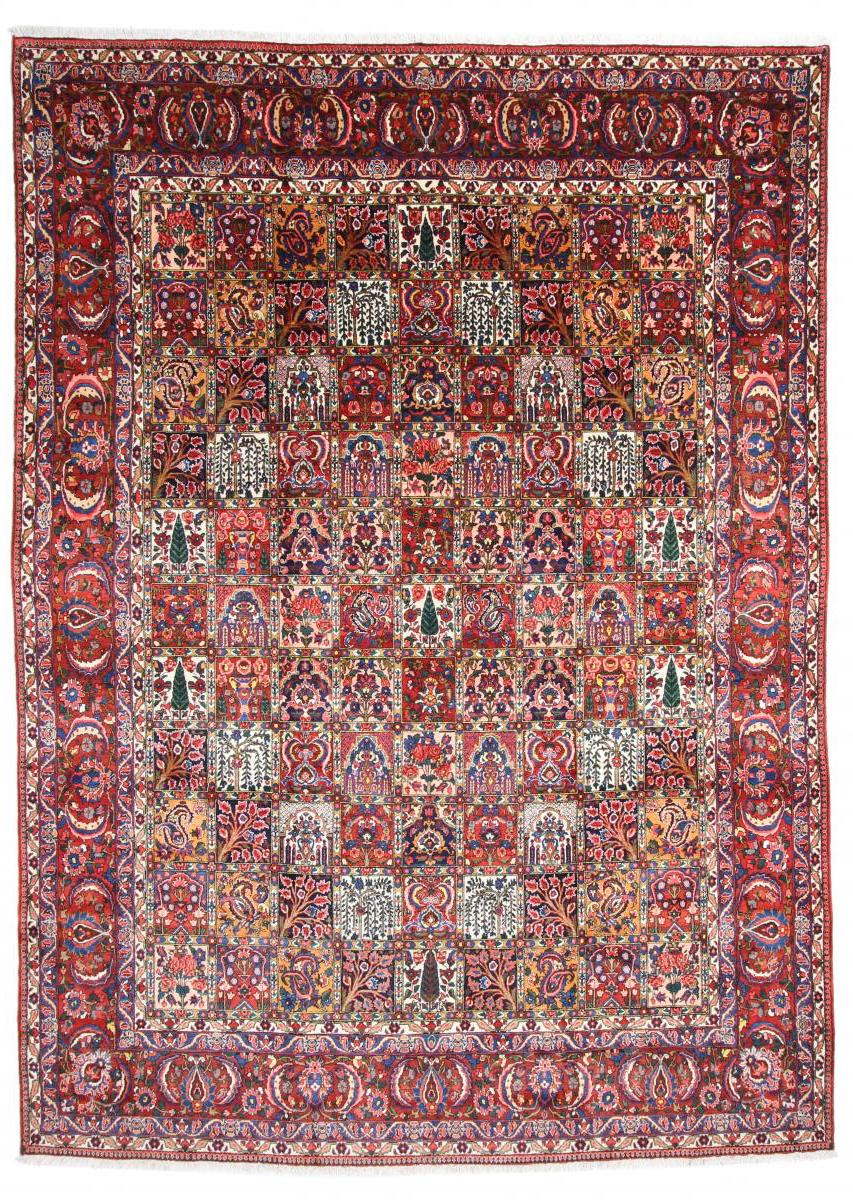
Bakhtiar Persian rug with slightly asymmetrical shape and over 10 different colour shades
Symmetry
In general, it can be said that no handmade carpet is completely symmetrical. On the one hand, the shape will always be somewhat uneven. On the other hand, the design of one half of the carpet cannot be mirrored exactly. A knotter sits on a carpet for months and cannot repeat small details or ornaments 1:1. However, this is exactly what a machine does. It creates completely symmetrical designs and shapes.
If you find irregularities or imperfections, these are signs of a hand-knotted carpet.
Fringes
In short, a genuine Oriental or Persian carpet has no sewn-on fringes. The fringes form the end of the warp yarns and are therefore an integral part of the carpet. If you should see on the back of the rug that the fringes have been sewn on, then in all probability it is not a genuine oriental rug.
A genuine Oriental or Persian carpet has no sewn-on fringes.

Backside of a Sarough Persian rug with a typical knot structure
Knot Structure
On the back of a carpet you can see the single knots, provided the carpet was knotted and not woven. The knots give experts a deep insight into the knotting method, the fineness, the effort and the quality of a carpet. As said before, hand-knotted rugs are never flawless. This can be seen particularly well at the knots. Irregularities and minor faults are absolutely normal on the reverse side of Oriental rugs - including Persian rugs.
If each row of knots on the reverse side is regular and free of defects, it is a machine-made carpet.
Material
In particular, traditional oriental carpets consist purely of natural material such as sheep's wool, cotton, camel hair or pure silk. The surface (the pile) is usually made of sheep's wool, while the back (the warp) is often made of cotton or sheep's wool. Very high quality carpets are made completely from natural silk, which can be recognized by its beautiful sheen. Machine-made carpets can also be made of wool, but often they are at least partly made of synthetic fibres. Especially on the back side, savings are made and cheap material is used.
If you find a synthetic reverse side of the carpet, it is an industrially manufactured carpet..
Knot Density
The knot density is used to determine the fineness of a rug. You can imagine the knot density as the resolution of a screen. The more knots a carpet has, the more details and the more beautiful are the elaborations. However, this also requires considerably more effort, skill and time in knotting. Therefore, it also serves to identify particularly high-quality Persian carpets. Here you find all information about measuring and estimating the knot density
.
The knot density can be used to identify a high-quality carpet.
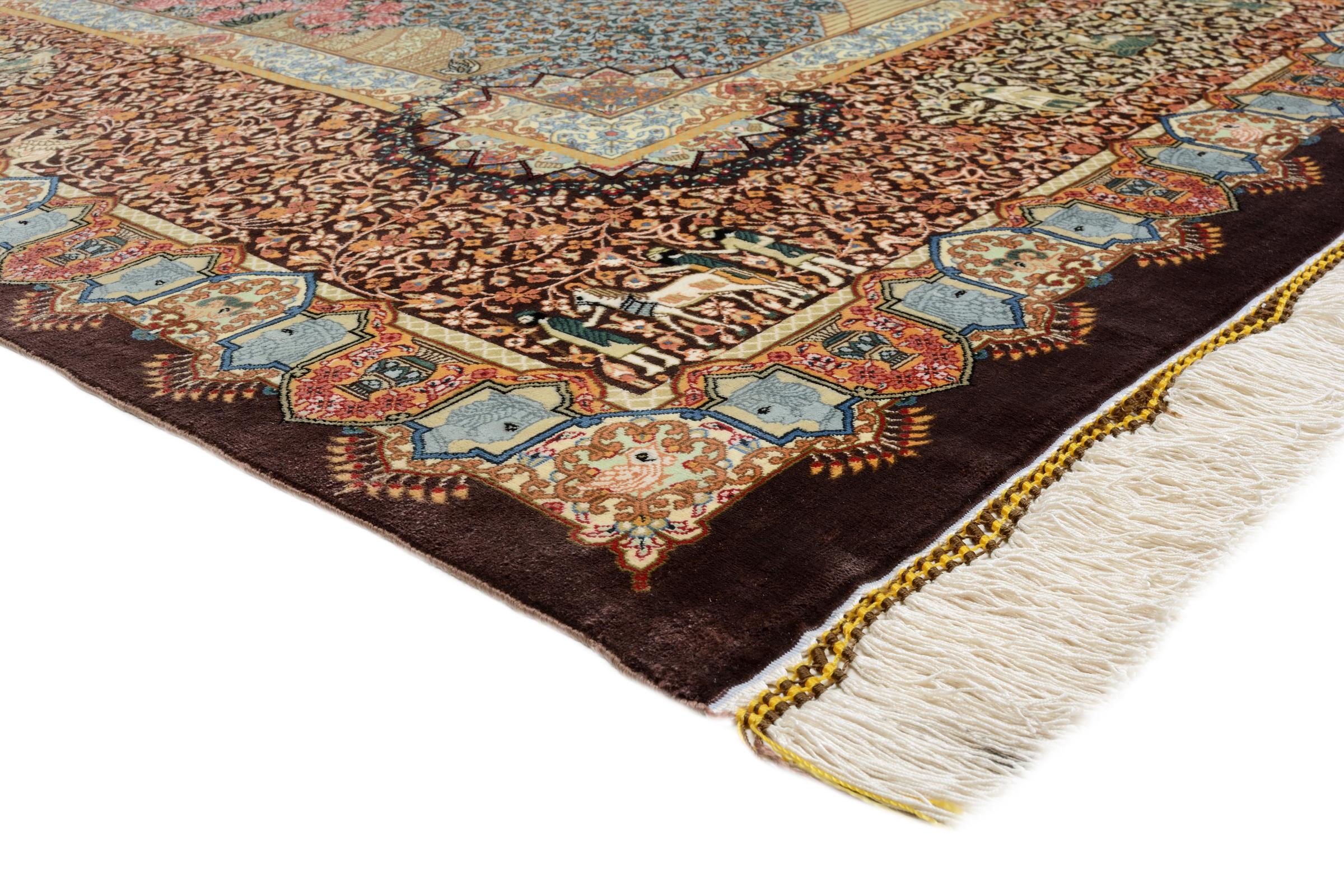
Persian Qom silk carpet with only 3 mm thickness
Pile Thickness
In addition to the knot density, the pile height, i.e. the thickness of the carpet, is an indicator of its value. The thinner a hand-knotted carpet, the higher its quality. Only very experienced knotters are able to make a very thin and flat carpet.
Very high-quality Persian carpets are usually only 3 - 6 mm thick.
Examples of hand-knotted rugs
| Sheep wool rugs | ||
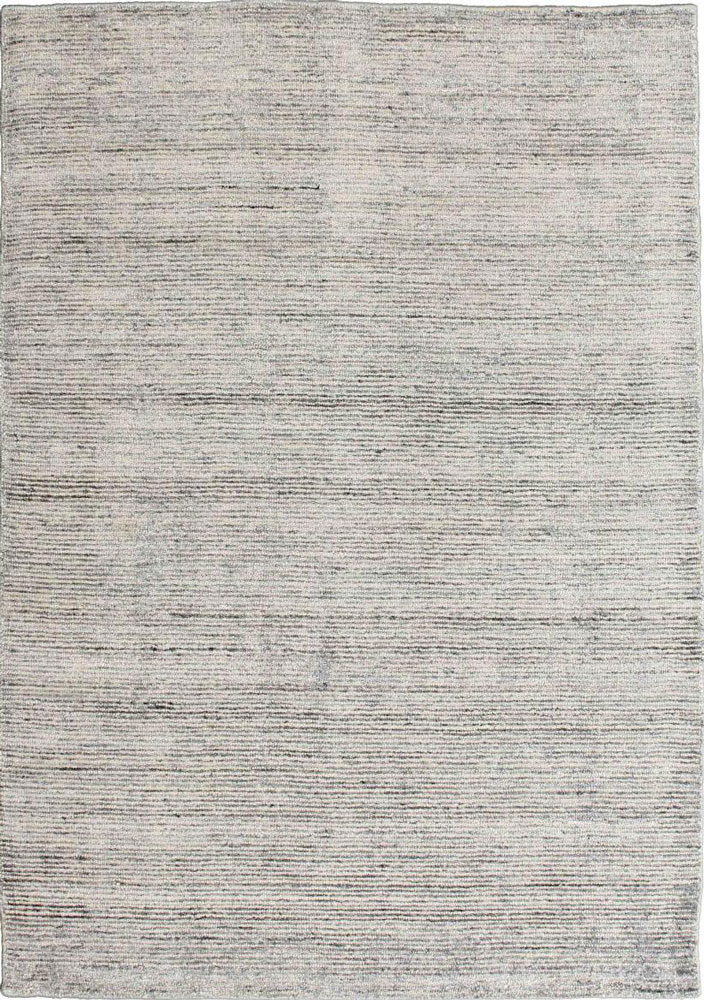
|
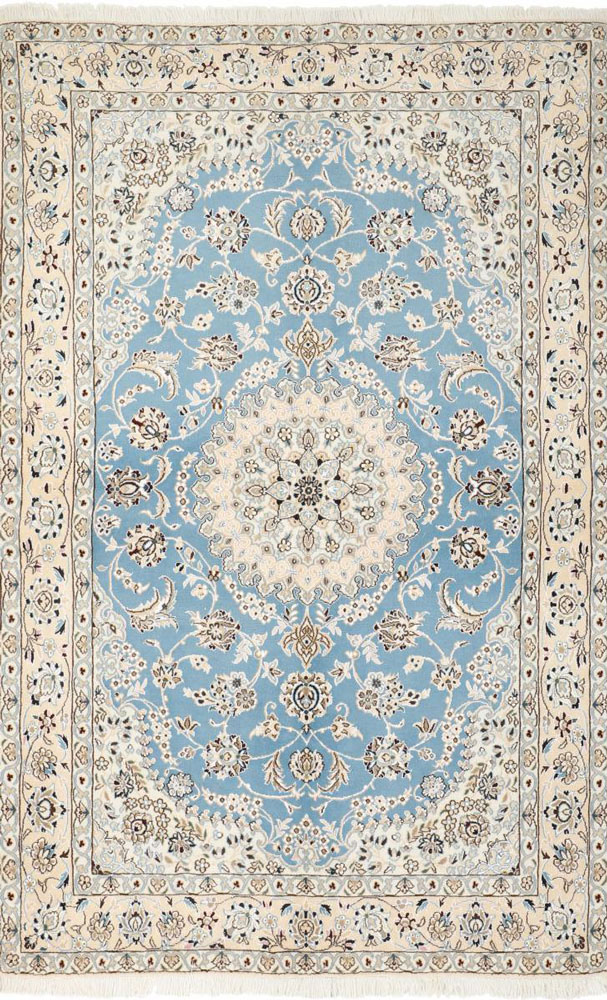
|
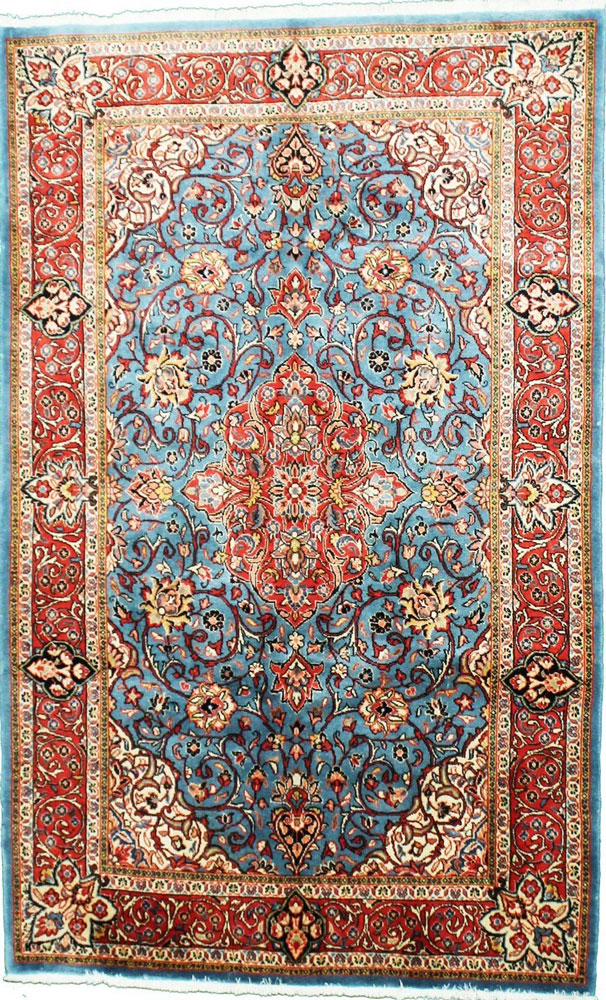
|
| Gabbeh nomad rugs | Nain Persian rugs | Saruk Persian rugs |
| Silk rugs | |
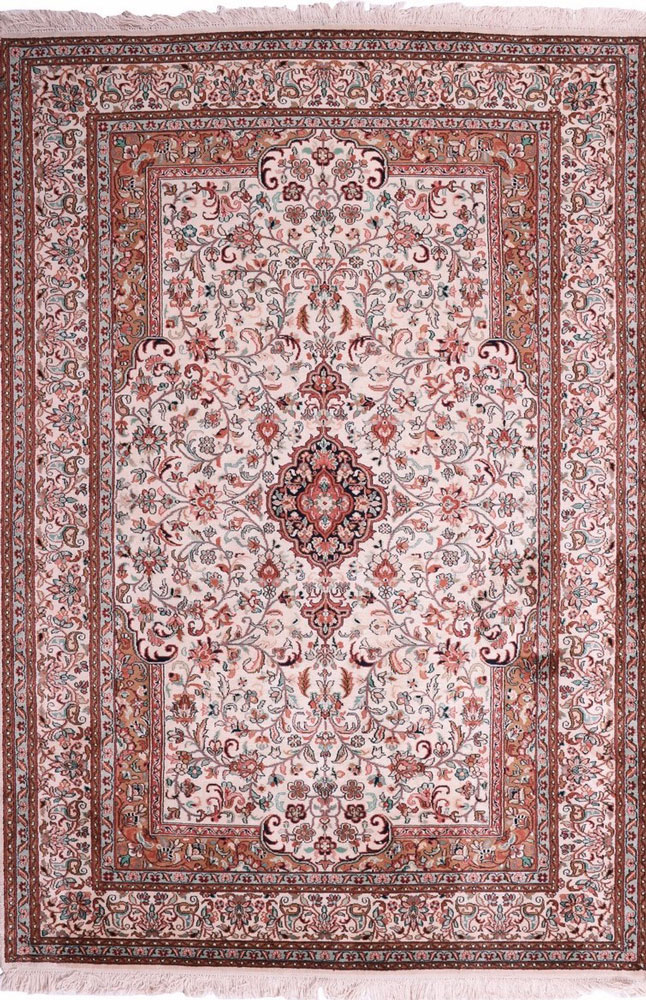
|
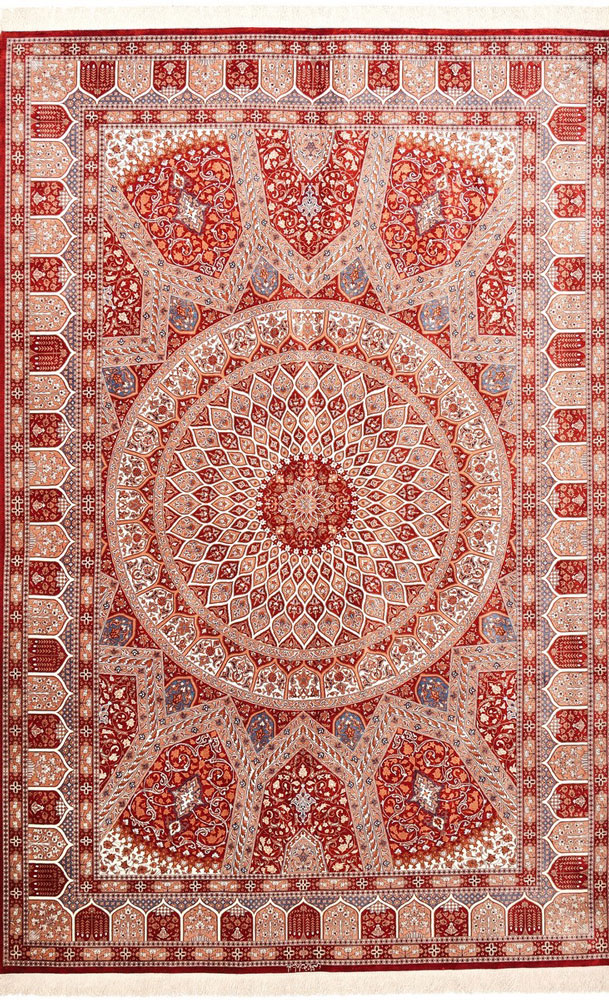
|
| Cashmere silk rugs | Qom silk rugs |
Production of oriental rugs
Centuries-old tradition is the basis of almost every Oriental rug. Long ago Persian rugs were already considered the highest luxury...
Read more
Whether sheep wool, silk or cotton, the material of a hand-knotted oriental rug usually comes from nature...
Read more
The colours of many high-quality oriental carpets still originate today from plants and minerals...
Read more
No matter how detailed the pattern may be, some knotters still craft the rug from memory today...
Read more
An art that has been perfected over many centuries and is still unrivalled today...
Read more
Colour facets, durability, level of detail are only a few of the differences to machine-made rugs...
Read more